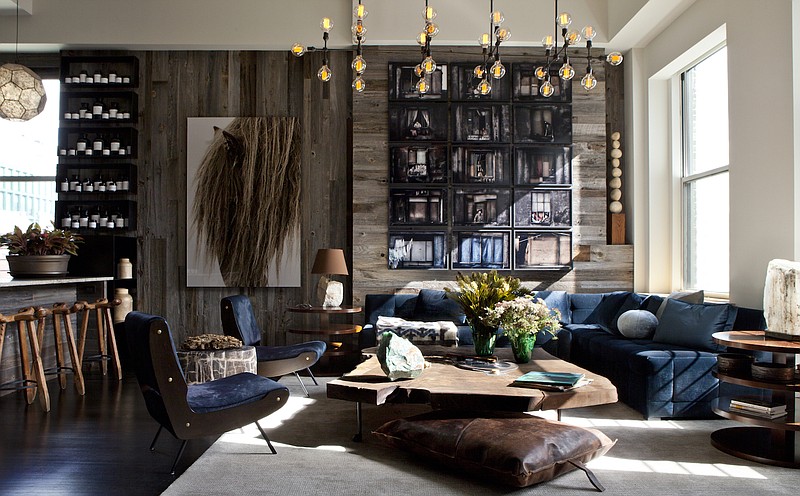I used to think that tension in a room was a good excuse to leave. I avoided it like a drunk uncle. That was until I talked to New York interior and furniture designer and James Huniford (please call him Ford), author of "James Huniford: At Home" (Monacelli Press, Nov. 10).
Ford puts tension in a room on purpose. Just as in a good movie, where the right amount of tension binds the plot and holds your attention, it can hold a room together, as well, he told me.
Before calling him, I looked through an advanced copy of his new, richly photographed coffee-table book. The 240-page hardcover features his A-list design projects -- from Upper East Side penthouses and country homes in Connecticut to his own residences, a loft in Tribeca and an historic house in Bridgehampton.
The book reminded me yet again that there are those who have vacation homes on Martha's Vineyard, palatial residences on the Upper East Side, and houses on the ocean bluffs of Marin County, and there are the rest of us.
Thankfully, books like Huniford's not only feed my eye-candy craving, but also let me and you see inside the homes belonging to the 1 percent (Spoiler alert: They look very nice.)
As Ford and I chatted, I asked him to talk about my favorite room in his book, a living room in a Lower East Side apartment. "The tension comes from combining the rustic with the refined," he said, noting that the wall is clad with reclaimed barn wood, while the sofa and chairs are covered in rich blue velvet. "That tension in a room is so important."
In another space, tension arose by juxtaposing humble kitchen swivel stools dressed in distressed leather and a modern persimmon-colored resin bar.

I had to think about this.
Looking harder at the compositions in his rooms, I saw that mixing high and low is one of Ford's trademarks. He demonstrates his use of found objects on almost every page. For example, rooms feature mounted collections of 19th-century grain sieves, knotty pieces of driftwood, thick balls of textural twine, vintage oars, a plane propeller, a pommel horse, and a giant section of antique metal chain. Not far from these items you'll find more upscale touches: a glistening crystal chandelier, a carved limestone fireplace, walls covered in faux eel-skin, art by David Hockney, and a posh lacquered goatskin table.
Tension.
"Expensive and inexpensive, important and workaday, glossy polished walnut and scuffed ash — they can all coexist in the same room," he writes. "Take chances and trust your eye over the rules."
Noted.
Here are more Ford maxims:
On a home's entry ...
When you walk into a house, you want the entry to set the stage without giving away the plot. Too much too soon leaves you with having to endlessly outdo yourself, which inevitably leads to overdoing.
On what makes a home ...
I like rooms that put comfort first. Rooms we can live in. I don't like rooms that are just pretty. Now more than ever, home must be, above all, comfortable.
On how to approach a room when designing ...
I start where I think the furniture will end up. I like to have furniture that looks out of a room rather than into a room, a sofa looking out on a view rather than into a black TV.
On the biggest mistakes he sees ...
When someone lives in a place surrounded by nature and greenery and covers windows with fabric that camouflages the view, and also having too much furniture or furniture too big for the room.
On blurring the line between precious and not ...
I've always been drawn to reusing common objects that are sculptural, like an old ladder from the side of a boat or used for apple picking repurposed as a towel rack or to hang throw blankets, or a pair of old jugs made into lamps. One photo in my book features my den, which has a set of wooden skirt hoops placed across the wall.

On advice to do-it-yourselfers who want to use found objects as decor ...
Have confidence. Anyone's taste is just a point of view. You have to take chances and believe what works for your eye looks good.
On secrets to living well ...
Take the time to set your table for dinner. Have cloth napkins. When looking for a place to sit or have a meal, go next to a window. Have an organized closet. Throw away what you don't wear or won't use, like the books you had in college 20 years ago.
Syndicated columnist Marni Jameson is the author of five home and lifestyle books, including "Downsizing the Blended Home — When Two Households Become One."
